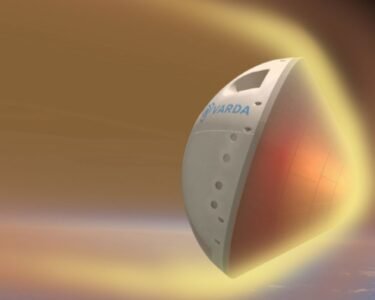In a major test flight of SpaceX largest rocket, the massive Starship took off from a launch pad in southern Texas today. However, the rocket exploded before reaching space and cut short the flight. In a recent launch attempt, Starship and its booster successfully lifted off from the launch pad and ascended to a height of 39 kilometers. However, the spacecraft unexpectedly lost control and unfortunately exploded just four minutes into the flight before the planned separation could occur. During a webcast of the launch attempt, John Insprucker, the principal integration engineer for SpaceX, which constructed Starship, stated that the situation was not normal.
SpaceX has achieved a significant milestone with its most ambitious rocket. It successfully launched from the pad with up to 33 engines firing in synchrony. This achievement is a major step forward for the company. According to Insprucker, the Starship provided a remarkable conclusion to an already remarkable test.
SpaceX has set the upcoming Starship flights to usher in a fresh era of space exploration, which includes transporting people to the Moon and Mars. This development could also pave the way for novel forms of astrophysics and planetary science. The rocket had no crew on its inaugural test flight.
The rocket with the highest power:
In a recent development, it has been revealed that Starship boasts of almost double the power of NASA’s latest deep-space rocket, the Space Launch System (SLS), which took its maiden flight in November. Until now, Starship had only undergone a few tests at low altitudes above SpaceX’s spaceport in Boca Chica, Texas. Today’s mission was to achieve space travel and orbit most of the planet before landing in the ocean near Hawaii.
According to Laura Forczyk, the executive director of Astralytical, a space consulting company in Atlanta, Georgia, the successful demonstration of Starship’s ability to reach orbit by SpaceX would have a significant impact on future developments.
SpaceX has announced its plans to utilize the Starship spacecraft to establish a human settlement on the planet Mars. NASA has set its sights on utilizing the vehicle to assist in landing astronauts on the Moon’s surface soon as a component of its proposed Artemis missions. Scientists are envisioning the potential of utilizing Starship’s vast size to transport large telescopes for planetary missions into the depths of space.
During the Space Symposium held in Colorado Springs, Colorado on April 18th, Julianna Scheiman, the director of NASA satellite missions at SpaceX, expressed her enthusiasm for the potential of utilizing Starship to advance scientific research.
Crafts that can be reused:
The Starship spacecraft resembles a colossal metal tube. It stands at a towering height of 120 meters. When combined with its Super Heavy rocket booster, it becomes even taller. Moreover, scientists have developed a new spacecraft that can transport up to 150 tonnes of equipment into space. The designers have innovatively crafted a fully reusable transportation system for future space missions, making it cost-effective. In a bid to reduce the expenses of space travel, SpaceX has announced its intention to recover and reuse its components.
According to Jennifer Heldmann, a planetary scientist at NASA’s Ames Research Center in Moffett Field, California, the limitations of space flight have always been mass, volume, and cost. Starship effectively removes all of these limitations.
Between 1981 and 2011, NASA completed 135 missions to low Earth orbit with its space shuttles. These shuttles were designed for routine space access. NASA has decided to retire the shuttle. Instead, they will focus on developing a more advanced SLS. This will enable deeper space exploration.
SpaceX has successfully created smaller rockets that are partially reusable, including the Falcon 9 and Falcon Heavy series. Various users, including governments and companies, frequently use these rockets to launch satellites. SpaceX plans to utilize its Starship spacecraft for the deployment of larger objects, including the upcoming Starlink communications satellites. However, some astronomers have raised concerns about the potential impact of these satellites on nighttime observations.
Challenges Faced by Rockets:
By Forczyk, the ability of SpaceX to deliver on its commitment to frequent and also cost-effective Starship flights remains uncertain. The potential of Starship to deliver smaller rockets is advantageous for the spacecraft. NASA has endorsed it as a crucial component of their Moon exploration initiative, which further strengthens its potential.
As demonstrated by today’s flight, the development of any new rocket remains a difficult task. Shortly, it is highly probable that SpaceX will conduct tests on several other Starships that have already been constructed. According to Forczyk, there is a possibility of witnessing substantial advancements this year. The possibility remains uncertain.





